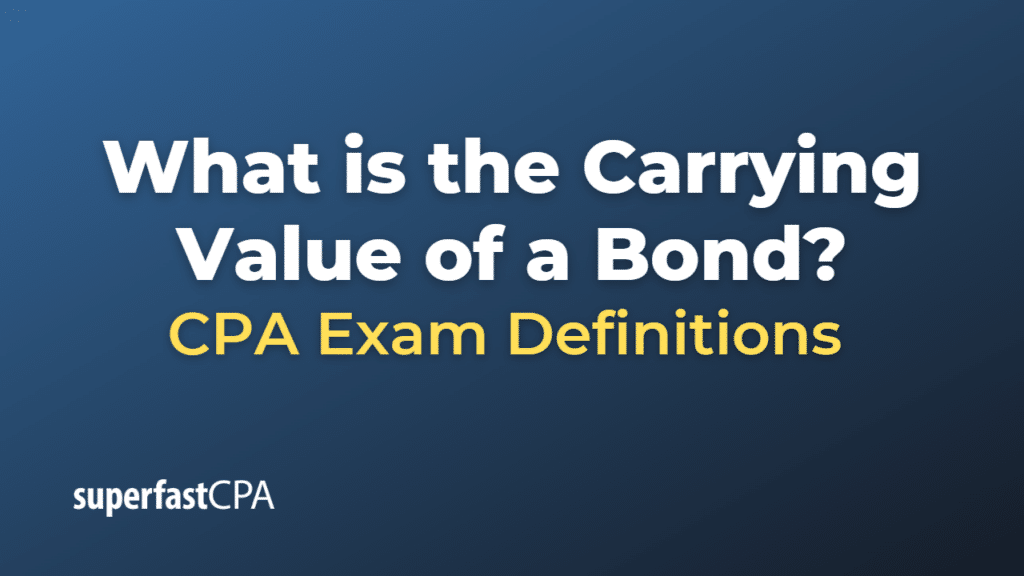Carrying Value of a Bond
The carrying value of a bond, also known as the book value, refers to the value of a bond as it appears on the issuer’s balance sheet. For bonds that are issued at par, the carrying value is equal to the face value (principal amount) of the bond. However, if the bond is issued at a premium or discount, the carrying value will change over time as the bond approaches maturity.
When a bond is issued at a premium, it means the bond is sold for more than its face value. The issuer records the excess amount as a bond premium, which is then amortized over the life of the bond. In this case, the carrying value of the bond is calculated as follows:
Carrying Value (Bond issued at a premium) = Face Value + Unamortized Bond Premium
When a bond is issued at a discount, it means the bond is sold for less than its face value. The issuer records the difference as a bond discount, which is then amortized over the life of the bond. In this case, the carrying value of the bond is calculated as follows:
Carrying Value (Bond issued at a discount) = Face Value – Unamortized Bond Discount
The carrying value of a bond is important because it reflects the outstanding liability the issuer has at a specific point in time. As the bond premium or discount is amortized over the life of the bond, the carrying value converges towards the face value, which represents the amount the issuer must pay back to bondholders at maturity.
Example of the Carrying Value of a Bond
Let’s consider a fictional company, “GreenEnergy Corp.,” that issues a 5-year, 6% bond with a face value of $1,000,000. However, due to prevailing market interest rates being 5%, the bond is issued at a premium, and investors pay $1,050,000 for the bond.
In this case, the bond premium is:
Bond Premium = Issue Price – Face Value
Bond Premium = $1,050,000 – $1,000,000
Bond Premium = $50,000
GreenEnergy Corp. will amortize this $50,000 bond premium over the 5-year life of the bond using the straight-line method. The annual bond premium amortization will be:
Annual Bond Premium Amortization = Bond Premium / Bond Life
Annual Bond Premium Amortization = $50,000 / 5
Annual Bond Premium Amortization = $10,000
At the end of the first year, the carrying value of the bond will be:
Carrying Value = Face Value + Unamortized Bond Premium
Carrying Value = $1,000,000 + ($50,000 – $10,000)
Carrying Value = $1,040,000
At the end of the second year, the carrying value of the bond will be:
Carrying Value = Face Value + Unamortized Bond Premium
Carrying Value = $1,000,000 + ($50,000 – $20,000)
Carrying Value = $1,030,000
As you can see, the carrying value of the bond decreases over time as the bond premium is amortized. By the end of the 5-year period, the carrying value of the bond will converge to its face value of $1,000,000, which is the amount GreenEnergy Corp. is obligated to repay to bondholders at maturity.













